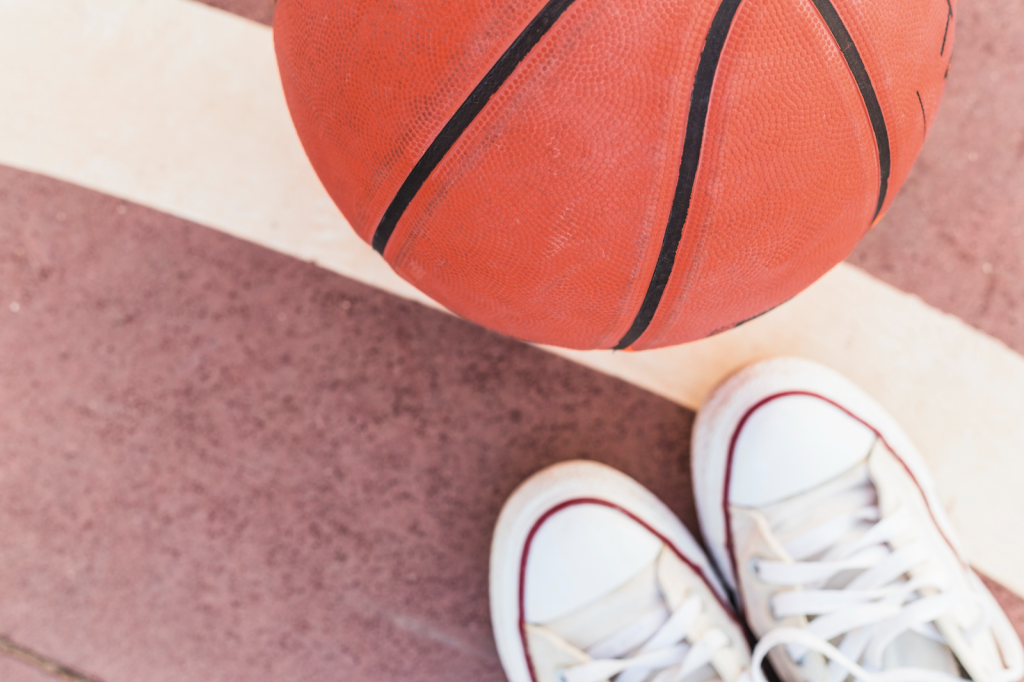
If you’ve ever talked to someone who played basketball in the 80s or 90s, you’ll notice a certain nostalgia when they mention their old shoes. They’ll laugh about the heavy leather, the flat soles, and the way those sneakers squeaked on a dusty court. For them, shoes were never the centerpiece of the game – they were just part of the uniform. Today, things feel different. Shoes are no longer an afterthought; they’ve become a quiet force shaping how players move, land, and express themselves on the court. And sometimes, when you scroll late at night through articles about new cushioning systems, you stumble onto random, unrelated topics – even something like sicbo online casino appearing mid-feed – and you remember just how chaotic the digital world can be.
But behind all the noise, there’s a surprisingly intimate story about how footwear evolved alongside basketball itself.
From simple canvas to engineered support
In the earliest decades of the game, shoes were brutally simple. Canvas tops, rubber bottoms, no cushioning, no structure – just enough material to keep the foot connected to the floor. Players didn’t expect their shoes to help them jump higher or land softer; if anything, they just hoped the stitching held during a fast break.
As the game became faster and more creative, shoes slowly began to reflect those changes. Leather replaced canvas, bringing stiffness and durability. Foam technology appeared, adding the first hints of shock absorption. Traction patterns became more thoughtful, helping players stop and pivot with confidence.
By the early 2000s, footwear design had become a science. Companies analyzed the angles of the ankle, the pressure under the heel, the torque created during a crossover. Shoes stopped being clothing – they became equipment.
Here’s a simple breakdown of how that evolution looked over the years:
| Era | Main Materials | Key Focus | Drawback |
| 1950s–70s | Canvas, basic rubber | Grip + simplicity | Almost no support |
| 1980s–90s | Leather, early foam | Protection + structure | Heavy, stiff fit |
| 2000s | EVA foam, strong rubber | Comfort + stability | Bulky for some players |
| 2010s | Knit, mesh, advanced foam | Lightness + energy return | Lower durability |
| Today | Hybrid textiles, plates, custom foams | Efficiency + injury prevention | High cost + specialization |
Every stage didn’t just change the shoe – it subtly changed how players played.
How today’s shoes help athletes move smarter, not harder
Cushioning that thinks with the body
The foams used today don’t just absorb impact – they give back energy. That spring, that small “push” on takeoff, keeps players explosive even in the fourth quarter.
Traction built like architecture
Designers map out grooves, curves, and patterns that grab the court exactly when needed. It’s not obvious, but it makes players trust their own movements.
Fit that changes, not limits
Uppers now stretch and move with the foot, which helps players feel more grounded instead of stuck. You can be free without giving up safety.
Support that respects position and style
A flexible shoe might be perfect for a point guard but dangerous for a center. Today’s models reflect that – stability for big men, agility for wings, responsiveness for guards.
When these elements work together, a shoe becomes invisible – not literally, but mentally. Players stop thinking about their feet and start thinking only about the game.
Biomechanics and personalization: the quiet revolution
One of the biggest shifts in modern footwear isn’t visible on TV. Many professional players now wear shoes shaped around their individual needs – arch height, landing mechanics, pronation tendencies, even past injuries.
A guard who rolls his ankles might get a padded collar. A forward with knee issues may use extra forefoot cushioning. A center absorbing constant impact benefits from stiff plates that spread out pressure.
These innovations used to be exclusive to pros, but they now trickle into consumer models, letting everyday athletes experience designs that once felt out of reach.
Shoes as part of identity, not just performance
Basketball shoes live at the intersection of sport and culture. Kids don’t just buy a pair for grip or cushioning – they buy them because of who wore them, what game they showed up in, what story they carry.
A shoe that feels right can make a player walk differently, think differently, even compete differently. Confidence shows up in movement long before it shows up on the scoreboard.
Looking forward: shoes that adapt to the moment
The future feels incredibly close. Designers are already trying out fits that adjust themselves, traction that changes based on the floor, and sensors that measure foot pressure in real time.
Soon, shoes might automatically get tighter during explosive moves, softer when they hit the ground, and change their support without the player even realizing it.
But one thing will always be true, no matter how much technology changes: shoes are more than just gear in basketball. They are associates who are always there to assist athletes move like themselves, but in a quiet and reliable way.
